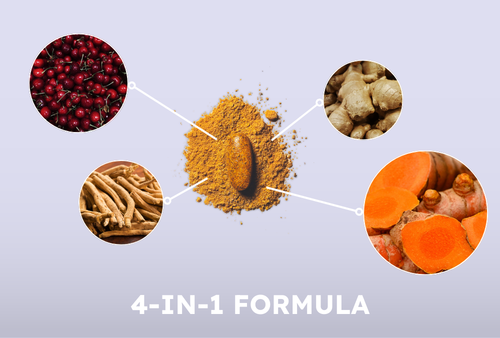Controlling the level of inflammation in your body is the key to improving and shortening your recovery. There is a reason you constantly hear about inflammation; it is involved in so much of what happens in our bodies.
Inflammation is often portrayed as harmful and as a sign of bad health. This is true in many cases. In fact the suffix -itis, which indicates inflammation, has become near-synonymous with illness. However, inflammation also serves a positive role in our bodies[1].
What is Inflammation?

Inflammation is nothing more than a response of our innate immune system. The innate immune system is meant to be the first responder to infection and injury. It reacts quickly to start the healing process before the adaptive immune system can respond. The adaptive part of our immune system needs time to mount more targeted response to infection— which is why we train it with vaccines.
Short-term or acute inflammation is the ideal response to illness or injury. The inflammatory response is brought on by one of the following conditions:
- Physical injury: burns, cuts, blunt trauma, etc.
- Infection: bacteria, viruses, and fungus.
- Chemical irritants or toxins
The innate immune system is able to recognize certain chemical signals released by pathogens and/or damaged tissue. Immune cells swarm the area and are able to kill pathogens and break down or help repair damaged cells. This process should only last a few days or weeks.
If successful, the inflammatory response should halt the spread of infection and tissue damage. It clears the way for the next two steps in the healing process: proliferation and remodeling. These last two steps involve new cells growing to replace the old tissue[1].
Inflammation Can Become Harmful
Inflammation becomes unhealthy when it remains long-term. This is called chronic inflammation and it is a sign of one of the following:
- The initial damage or infection hasn’t been cleared.
- A toxin is remaining in your environment and your body is constantly trying to clear it.
- Your immune system has become overactive—fighting harmless environmental agents or your own body.
Chronic inflammation means the immune system remains overactive, which has detrimental effects. In inflammatory diseases like rheumatoid arthritis, the immune system attacks the body constantly. Healthy tissue is constantly destroyed, and there isn’t any opportunity for the rest of the healing to take place.
Even when there is good reason for inflammation, like following surgery, there needs to be a balance to the amount of inflammation. Too much or too little inflammation does not allow for optimum recovery[1].
Treating Chronic Inflammation With Your Diet
There are several options when it comes to controlling chronic inflammation. Historically, we have relied on medication to keep inflammation in check. However, this has its drawbacks. The medications we use as painkillers can limit inflammation, but they can also be overly powerful. Studies have shown that they can diminish the recovery process as well as lead to negative side effects[2][3].
This has led to the recent surge in moderating inflammation through anti-inflammatory diets and supplements. This option allows our bodies to carry out the initial, helpful inflammation, but prevent overactive or long-term inflammation.

Anti-inflammatory diets aim to exclude food that increases inflammation and include nutrients proven to help reduce inflammation. Here is a list of things to avoid and include when recovering from injury or dealing with and inflammatory disease[4][5][6].
Avoid
- Sugary snacks and drinks
- Alcohol
- Refined carbohydrates such as pasta and white bread
- Fried food
- Red meat and processed meat
Include
- Leafy greens such as kale and spinach
- Tomatoes
- Fruits such as apples, cherries, and blueberries
- Turmeric
- Bioprene
- Boron
- Healthy fats and oils from nuts, fish, and olive oil
The great thing about anti-inflammatory diets is that they are healthy, balanced diets. They don’t prevent the immune system from aiding in the healing process, but they can limit prolonged and excessive inflammation. When used during recovery or in cases of chronic inflammation, these diet suggestions can shorten and improve recovery and limit over-reliance on pharmaceutical drugs.



